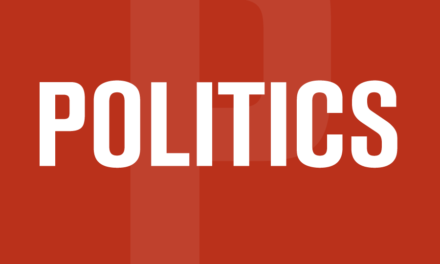Pierre Poilievre was at it again this week. Even after Jagmeet Singh announced the end of the NDP deal with the Liberals, the Conservative leader was grabbing for headlines and donations by demanding the NDP help bring down the government so voters could throw out the “costly coalition” and elect a Conservative government that would “fix the budget.”
Like most of the catchphrases beloved by the Poilievre Conservatives, that’s hogwash. There’s was no coalition – the supply and confidence agreement between the Liberals and the NDP did not a “coalition” make.
As for “fixing the budget”, according to the latest report on government debt from the Parliamentary Budget Office, the current government is far less “costly” than the one Poilievre was part of nine years ago.
As discussed last September the PBO’s annual Fiscal Sustainability Report for 2023 cast doubt on the fear-mongering about the federal debt emanating from the Conservatives and their allies on the business pages. The 2024 report is more of the same.
Just as Poilievre was crowing about the need for a fall election to end the “costly coalition,” the budget office report revealed that federal, provincial and municipal finances are in better shape than when Poilievre was a cabinet minister under Stephen Harper.
The federal government’s debt-to-GDP ratio for 2024 is projected at 28.7 percent, down from 31.2 percent the current government inherited from the Harper government in 2015. Moreover the drop is even greater for combined federal, provincial and municipal debt-to-GDP – for 2024 it totals 46.1 percent, down 20 percent from 57.7 percent in 2015.
To put that in plainer language, despite pandemic spending, inflation and the introduction of new federal programs like child care and dental care, the PBO report – unfortunately ignored by most of the media – shows that government finances are in better shape now than they were when Trudeau’s Liberals took office.
Detailed projections, including the value of public pensions, can be found here. When the value of public pensions is included, the debt picture is even more positive. And as the table below shows, when only federal and provincial/municipal governments are counted, debt-to-GDP ratio has dropped significantly since the pandemic-related spike in spending in 2020. In 2023, the debt ratio reached the lowest point since the PBO started keeping track in 2008.
Government debt-to-GDP selected years
| Year | Federal Gov | Prov/Mun Gov | Total Gov |
| 2008 | 30.5% | 17.9% | 48.4% |
| 2015 | 31.2% | 26.5% | 57.7% |
| 2019 | 28.6% | 25.6% | 54.2% |
| 2020 | 39.5% | 27.2% | 66.7% |
| 2023 | 29.1% | 17.0% | 46.1% |
| 2024 (Projected) | 28.7% | 17.4% | 46.1% |
Source: PBO
Despite criticism about federal transfers by mostly conservative-governed provinces, provincial/municipal governments have seen their fiscal situations improve dramatically, with projected debt-to-GDP dropping by a third between 2015 and 2023 – from 26.5 to 17.0. Compare that with what happened between 2008 and 2015 when Polievre’s party was in power. Provincial/municipal debt increased from 17.9 to 26.5 per cent of GDP – a jump of nearly 50 percent.
(The PBO measures net debt using Statistics Canada’s Government Financial Statistics (GFS), producing different results for debt-GDP from those reported in government public accounts. For Nova Scotia, the public accounts number is much higher – 34.6 per cent in 2023-4 versus 16.3 per cent for the PBO.)
Looking ahead
As for the future, as was the case a year ago the PBO projected that current fiscal policy is sustainable over the long term, meaning that based on current taxation and spending plans, the size of government debt does not grow as a share of the economy. The 2024 projection reflects measures contained in this year’s federal budget, which included increased program spending and higher interest payments. As a result, there is a slight reduction in the federal government’s capacity to reduce taxes or Increase spending, while maintaining fiscal sustainability.
Last year, the PBO calculated that the federal government can maintain its current debt level while increasing spending and/or reducing taxes by nearly $50 billion a year. This year, it’s $46 billion in current dollars, growing in line with GDP thereafter – demonstrating that the Liberals have the money to address areas of underfunding such as the new disability benefit, introduced with a measly $6.1 billion budget over five years.
So the PBO report provides no rationale for cutting spending. It does however present an opportunity for inquiry into the intent behind the “fix the budget” slogan the Conservatives have been chanting for the past year. Since it ain’t broke, why exactly do the Conservatives want to fix it?
-30-
Key excepts from the PBO report.
From the perspective of the total general government sector, that is federal and subnational governments and public pension plans combined, current fiscal policy in Canada is sustainable over the long term. Relative to the size of the Canadian economy, total general government net debt is projected to decline steadily over the long term due to fiscal room at the federal level and to rising net asset positions in the public pension plans.
Current fiscal policy at the federal level is sustainable over the long term. To stabilize its net debt at 30.5 per cent of GDP over the long term, we estimate that the federal government could permanently increase spending or reduce taxes by 1.7 per cent of GDP ($49.5 billion in current dollars, growing in line with GDP thereafter).”



